Gopi Ramena
PrivPAS: A real time Privacy-Preserving AI System and applied ethics
Feb 08, 2022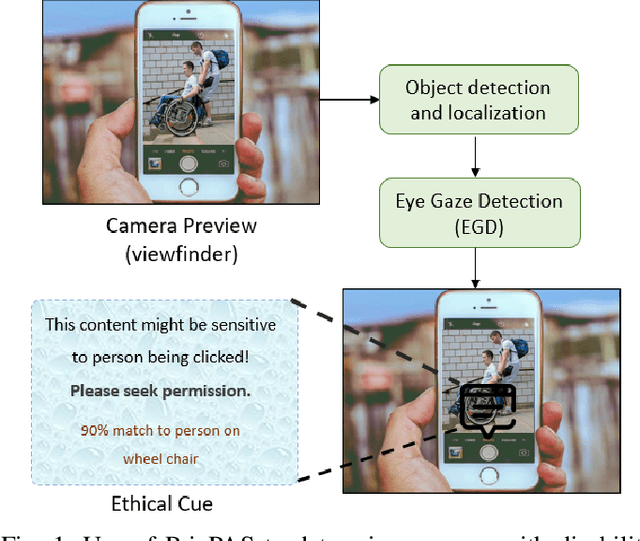
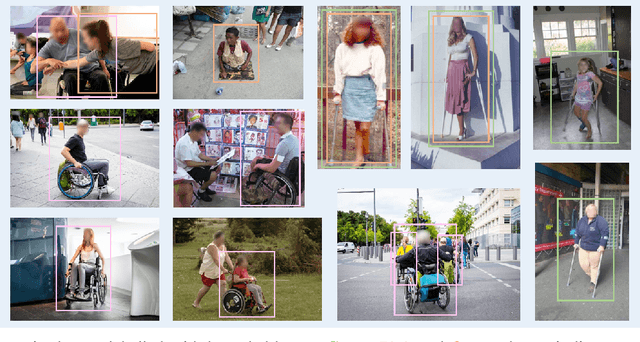

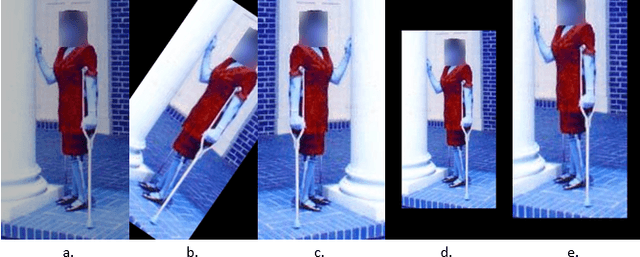
Abstract:With 3.78 billion social media users worldwide in 2021 (48% of the human population), almost 3 billion images are shared daily. At the same time, a consistent evolution of smartphone cameras has led to a photography explosion with 85% of all new pictures being captured using smartphones. However, lately, there has been an increased discussion of privacy concerns when a person being photographed is unaware of the picture being taken or has reservations about the same being shared. These privacy violations are amplified for people with disabilities, who may find it challenging to raise dissent even if they are aware. Such unauthorized image captures may also be misused to gain sympathy by third-party organizations, leading to a privacy breach. Privacy for people with disabilities has so far received comparatively less attention from the AI community. This motivates us to work towards a solution to generate privacy-conscious cues for raising awareness in smartphone users of any sensitivity in their viewfinder content. To this end, we introduce PrivPAS (A real time Privacy-Preserving AI System) a novel framework to identify sensitive content. Additionally, we curate and annotate a dataset to identify and localize accessibility markers and classify whether an image is sensitive to a featured subject with a disability. We demonstrate that the proposed lightweight architecture, with a memory footprint of a mere 8.49MB, achieves a high mAP of 89.52% on resource-constrained devices. Furthermore, our pipeline, trained on face anonymized data, achieves an F1-score of 73.1%.
On-Device Spatial Attention based Sequence Learning Approach for Scene Text Script Identification
Dec 01, 2021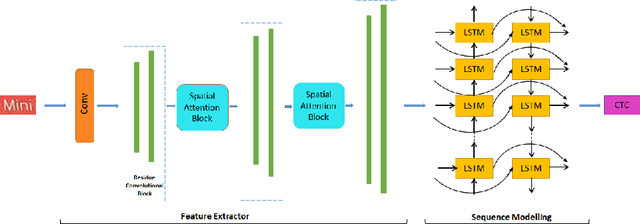
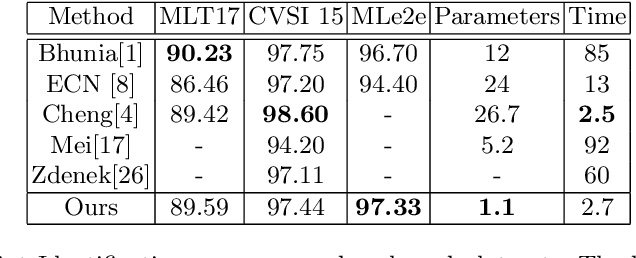


Abstract:Automatic identification of script is an essential component of a multilingual OCR engine. In this paper, we present an efficient, lightweight, real-time and on-device spatial attention based CNN-LSTM network for scene text script identification, feasible for deployment on resource constrained mobile devices. Our network consists of a CNN, equipped with a spatial attention module which helps reduce the spatial distortions present in natural images. This allows the feature extractor to generate rich image representations while ignoring the deformities and thereby, enhancing the performance of this fine grained classification task. The network also employs residue convolutional blocks to build a deep network to focus on the discriminative features of a script. The CNN learns the text feature representation by identifying each character as belonging to a particular script and the long term spatial dependencies within the text are captured using the sequence learning capabilities of the LSTM layers. Combining the spatial attention mechanism with the residue convolutional blocks, we are able to enhance the performance of the baseline CNN to build an end-to-end trainable network for script identification. The experimental results on several standard benchmarks demonstrate the effectiveness of our method. The network achieves competitive accuracy with state-of-the-art methods and is superior in terms of network size, with a total of just 1.1 million parameters and inference time of 2.7 milliseconds.
STRIDE : Scene Text Recognition In-Device
May 17, 2021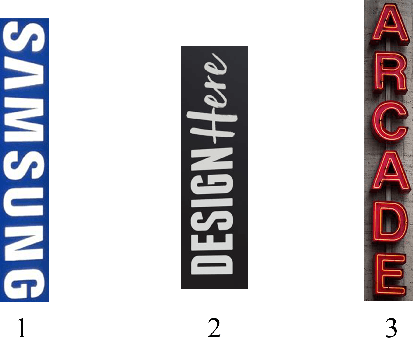

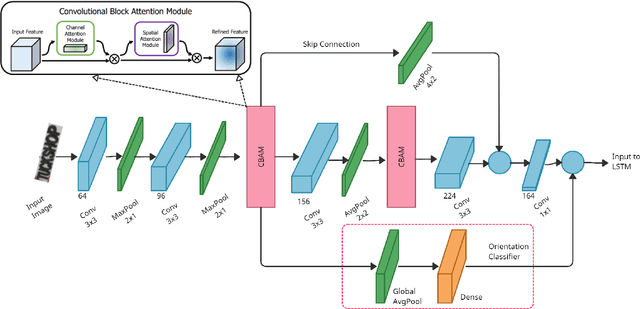

Abstract:Optical Character Recognition (OCR) systems have been widely used in various applications for extracting semantic information from images. To give the user more control over their privacy, an on-device solution is needed. The current state-of-the-art models are too heavy and complex to be deployed on-device. We develop an efficient lightweight scene text recognition (STR) system, which has only 0.88M parameters and performs real-time text recognition. Attention modules tend to boost the accuracy of STR networks but are generally slow and not optimized for device inference. So, we propose the use of convolution attention modules to the text recognition networks, which aims to provide channel and spatial attention information to the LSTM module by adding very minimal computational cost. It boosts our word accuracy on ICDAR 13 dataset by almost 2\%. We also introduce a novel orientation classifier module, to support the simultaneous recognition of both horizontal and vertical text. The proposed model surpasses on-device metrics of inference time and memory footprint and achieves comparable accuracy when compared to the leading commercial and other open-source OCR engines. We deploy the system on-device with an inference speed of 2.44 ms per word on the Exynos 990 chipset device and achieve an accuracy of 88.4\% on ICDAR-13 dataset.
Codeswitched Sentence Creation using Dependency Parsing
Dec 05, 2020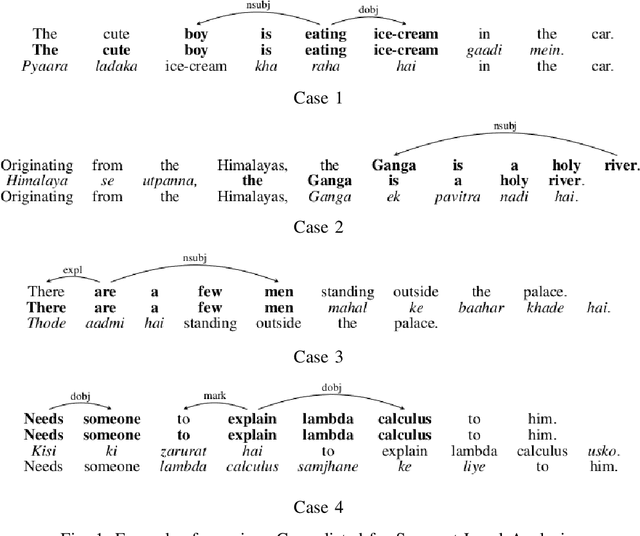
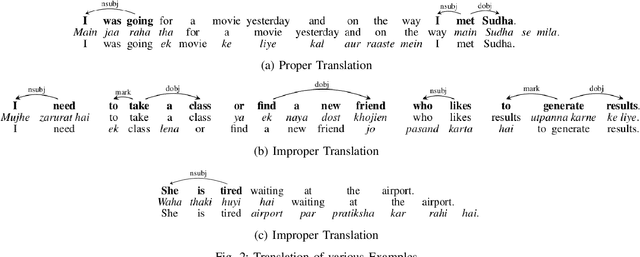


Abstract:Codeswitching has become one of the most common occurrences across multilingual speakers of the world, especially in countries like India which encompasses around 23 official languages with the number of bilingual speakers being around 300 million. The scarcity of Codeswitched data becomes a bottleneck in the exploration of this domain with respect to various Natural Language Processing (NLP) tasks. We thus present a novel algorithm which harnesses the syntactic structure of English grammar to develop grammatically sensible Codeswitched versions of English-Hindi, English-Marathi and English-Kannada data. Apart from maintaining the grammatical sanity to a great extent, our methodology also guarantees abundant generation of data from a minuscule snapshot of given data. We use multiple datasets to showcase the capabilities of our algorithm while at the same time we assess the quality of generated Codeswitched data using some qualitative metrics along with providing baseline results for couple of NLP tasks.
On-Device Tag Generation for Unstructured Text
Dec 05, 2020



Abstract:With the overwhelming transition to smart phones, storing important information in the form of unstructured text has become habitual to users of mobile devices. From grocery lists to drafts of emails and important speeches, users store a lot of data in the form of unstructured text (for eg: in the Notes application) on their devices, leading to cluttering of data. This not only prevents users from efficient navigation in the applications but also precludes them from perceiving the relations that could be present across data in those applications. This paper proposes a novel pipeline to generate a set of tags using world knowledge based on the keywords and concepts present in unstructured textual data. These tags can then be used to summarize, categorize or search for the desired information thus enhancing user experience by allowing them to have a holistic outlook of the kind of information stored in the form of unstructured text. In the proposed system, we use an on-device (mobile phone) efficient CNN model with pruned ConceptNet resource to achieve our goal. The architecture also presents a novel ranking algorithm to extract the top n tags from any given text.
On-Device Sentence Similarity for SMS Dataset
Dec 04, 2020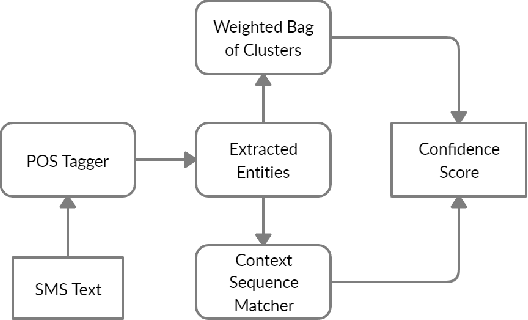

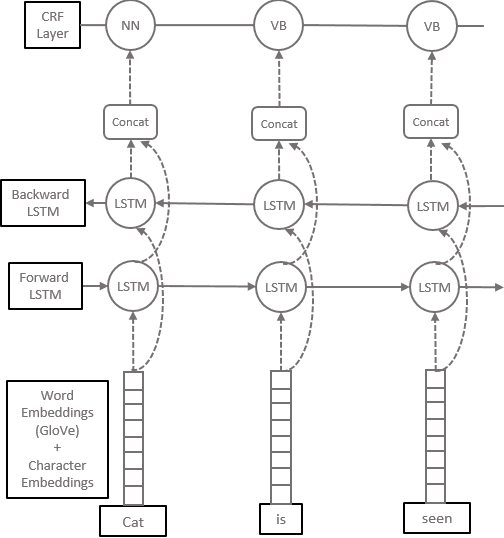
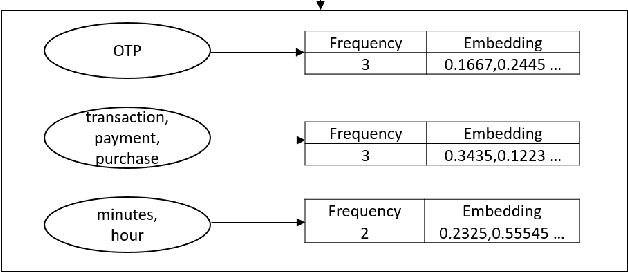
Abstract:Determining the sentence similarity between Short Message Service (SMS) texts/sentences plays a significant role in mobile device industry. Gauging the similarity between SMS data is thus necessary for various applications like enhanced searching and navigation, clubbing together SMS of similar type when given a custom label or tag is provided by user irrespective of their sender etc. The problem faced with SMS data is its incomplete structure and grammatical inconsistencies. In this paper, we propose a unique pipeline for evaluating the text similarity between SMS texts. We use Part of Speech (POS) model for keyword extraction by taking advantage of the partial structure embedded in SMS texts and similarity comparisons are carried out using statistical methods. The proposed pipeline deals with major semantic variations across SMS data as well as makes it effective for its application on-device (mobile phone). To showcase the capabilities of our work, our pipeline has been designed with an inclination towards one of the possible applications of SMS text similarity discussed in one of the following sections but nonetheless guarantees scalability for other applications as well.
On-Device Text Image Super Resolution
Nov 20, 2020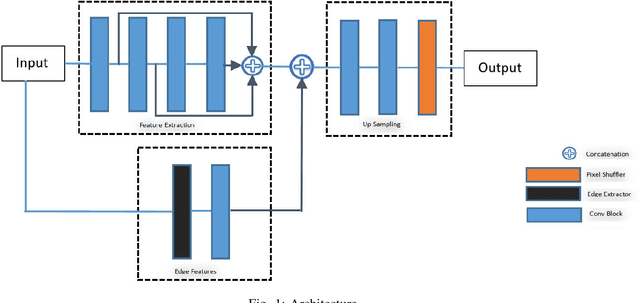
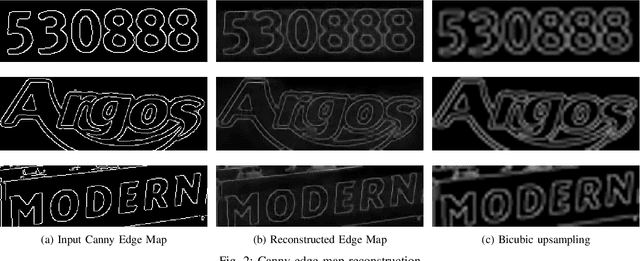
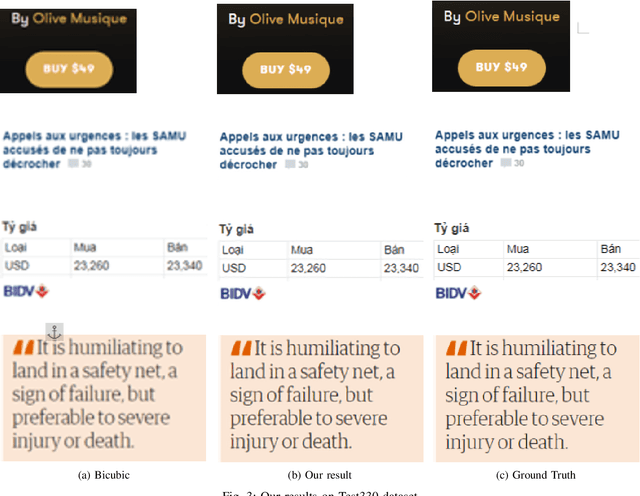
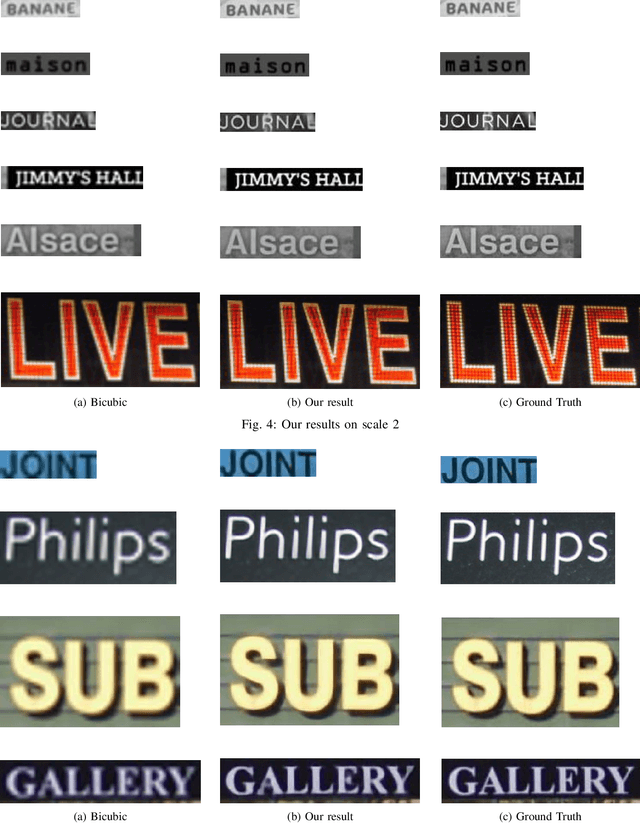
Abstract:Recent research on super-resolution (SR) has witnessed major developments with the advancements of deep convolutional neural networks. There is a need for information extraction from scenic text images or even document images on device, most of which are low-resolution (LR) images. Therefore, SR becomes an essential pre-processing step as Bicubic Upsampling, which is conventionally present in smartphones, performs poorly on LR images. To give the user more control over his privacy, and to reduce the carbon footprint by reducing the overhead of cloud computing and hours of GPU usage, executing SR models on the edge is a necessity in the recent times. There are various challenges in running and optimizing a model on resource-constrained platforms like smartphones. In this paper, we present a novel deep neural network that reconstructs sharper character edges and thus boosts OCR confidence. The proposed architecture not only achieves significant improvement in PSNR over bicubic upsampling on various benchmark datasets but also runs with an average inference time of 11.7 ms per image. We have outperformed state-of-the-art on the Text330 dataset. We also achieve an OCR accuracy of 75.89% on the ICDAR 2015 TextSR dataset, where ground truth has an accuracy of 78.10%.
On-Device Language Identification of Text in Images using Diacritic Characters
Nov 10, 2020



Abstract:Diacritic characters can be considered as a unique set of characters providing us with adequate and significant clue in identifying a given language with considerably high accuracy. Diacritics, though associated with phonetics often serve as a distinguishing feature for many languages especially the ones with a Latin script. In this proposed work, we aim to identify language of text in images using the presence of diacritic characters in order to improve Optical Character Recognition (OCR) performance in any given automated environment. We showcase our work across 13 Latin languages encompassing 85 diacritic characters. We use an architecture similar to Squeezedet for object detection of diacritic characters followed by a shallow network to finally identify the language. OCR systems when accompanied with identified language parameter tends to produce better results than sole deployment of OCR systems. The discussed work apart from guaranteeing an improvement in OCR results also takes on-device (mobile phone) constraints into consideration in terms of model size and inference time.
On-Device Information Extraction from SMS using Hybrid Hierarchical Classification
Feb 03, 2020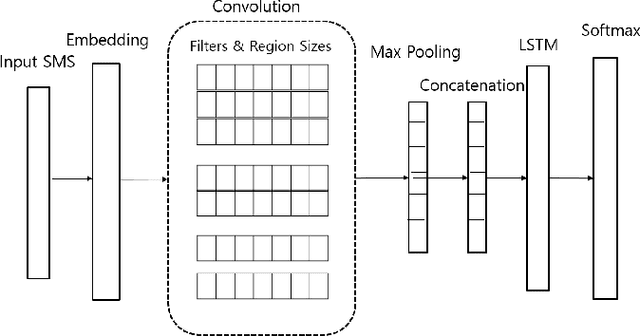
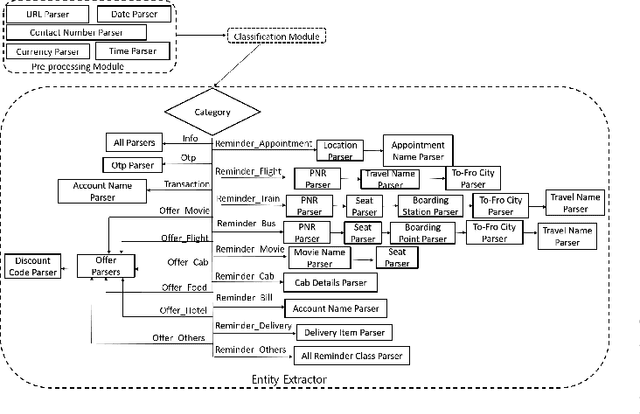

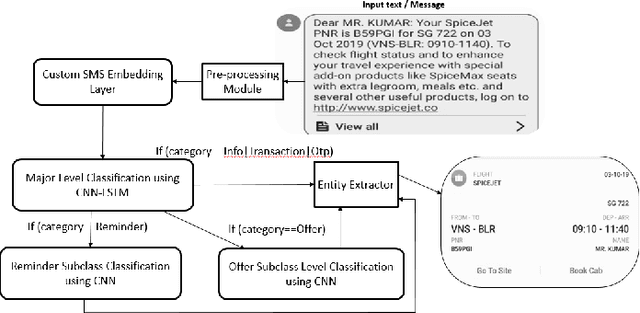
Abstract:Cluttering of SMS inbox is one of the serious problems that users today face in the digital world where every online login, transaction, along with promotions generate multiple SMS. This problem not only prevents users from searching and navigating messages efficiently but often results in users missing out the relevant information associated with the corresponding SMS like offer codes, payment reminders etc. In this paper, we propose a unique architecture to organize and extract the appropriate information from SMS and further display it in an intuitive template. In the proposed architecture, we use a Hybrid Hierarchical Long Short Term Memory (LSTM)-Convolutional Neural Network (CNN) to categorize SMS into multiple classes followed by a set of entity parsers used to extract the relevant information from the classified message. The architecture using its preprocessing techniques not only takes into account the enormous variations observed in SMS data but also makes it efficient for its on-device (mobile phone) functionalities in terms of inference timing and size.
An Efficient Architecture for Predicting the Case of Characters using Sequence Models
Jan 30, 2020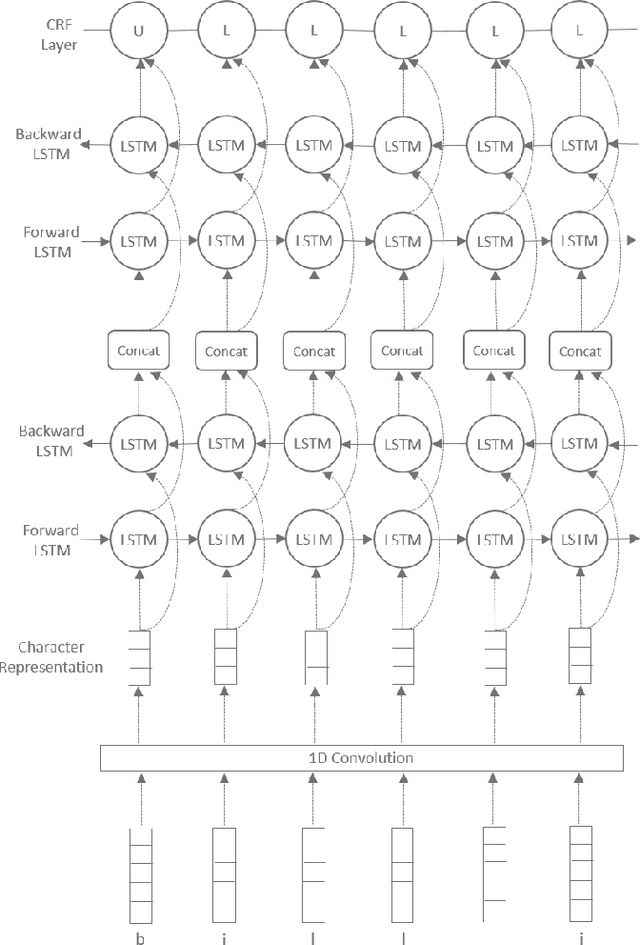
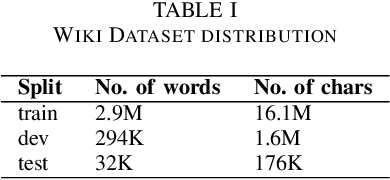


Abstract:The dearth of clean textual data often acts as a bottleneck in several natural language processing applications. The data available often lacks proper case (uppercase or lowercase) information. This often comes up when text is obtained from social media, messaging applications and other online platforms. This paper attempts to solve this problem by restoring the correct case of characters, commonly known as Truecasing. Doing so improves the accuracy of several processing tasks further down in the NLP pipeline. Our proposed architecture uses a combination of convolutional neural networks (CNN), bi-directional long short-term memory networks (LSTM) and conditional random fields (CRF), which work at a character level without any explicit feature engineering. In this study we compare our approach to previous statistical and deep learning based approaches. Our method shows an increment of 0.83 in F1 score over the current state of the art. Since truecasing acts as a preprocessing step in several applications, every increment in the F1 score leads to a significant improvement in the language processing tasks.
 Add to Chrome
Add to Chrome Add to Firefox
Add to Firefox Add to Edge
Add to Edge